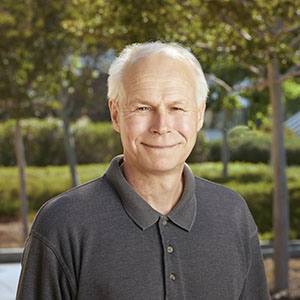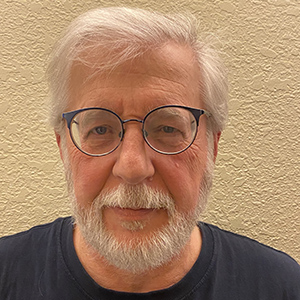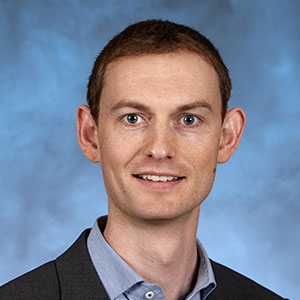Atmospheric, Earth, & Energy Science
Innovative science above, on, and below the planet’s surface
LLNL’s missions in national security, energy security, and fundamental science require robust, multidisciplinary research and development in atmospheric, Earth, and energy sciences.
Researchers in the Atmospheric, Earth, & Energy Division (AEED) continually innovate to support these missions to make the world safer, the environment cleaner, and our energy resources more sustainable.
Our key areas of research include seismology, geophysics, geomechanics, geochemistry, atmospheric dispersion, climate modeling and model intercomparison, climate change detection and attribution, and the hydrological and carbon cycles. We also improve and sustain advanced experimental and computational capabilities to better understand the complex interactions among energy production, energy utilization, and the environment.
Our scientists support the Center for Accelerator Mass Spectrometry (CAMS) at LLNL, which specializes in measuring ultralow concentrations of long-lived radioisotopes, the National Atmospheric Release Advisory Center (NARAC), the US Department of Homeland Security’s Interagency Modeling and Atmospheric Assessment Center (IMAAC), as well as programs in energy and environmental security and nonproliferation.
Our mission is to integrate atmospheric, earth, and energy sciences in support of defense and global security. Explore this page to learn about the people, research, and resources that support our mission.
Learn more about atmospheric, earth, and energy research at LLNL
People
Research Groups
- Atmospheric Science Research and Applications
- Center for Accelerator Mass Spectrometry
- Climate Sciences Section
- Computational Geosciences
- Energy and Carbon Management
- Porous Media
- Seismology
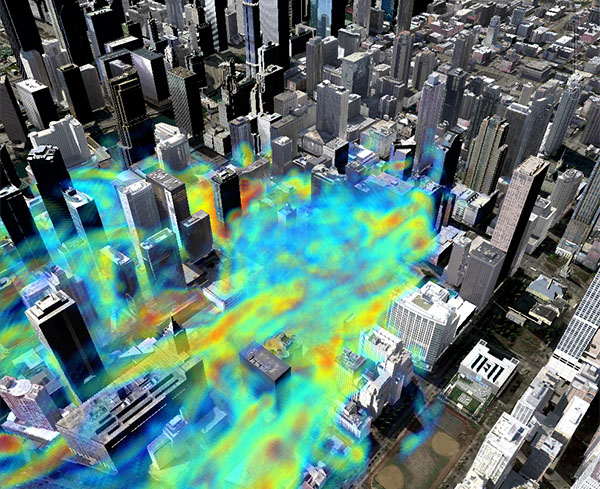
Atmospheric Science Research and Applications
Multiscale atmospheric solutions for defense, energy, nuclear security, and public safety
Group leader: Jessica Cruz
Our group applies techniques such as prognostic and diagnostic simulations, machine learning and artificial intelligence, and field experimentation to diverse atmospheric science challenges. Key areas of our research include:
- Dispersion modeling: Source-term characterization, inverse modeling, urban transport, uncertainty quantification, atmospheric signatures of nuclear events, airborne disease transmission, and all-hazards shelter/evacuation response.
- Wind energy: Downscaling atmospheric flow models, onshore and offshore wind characterization, field campaigns, wind farm–turbine wake interactions, and flow over complex terrain.
- Fire dynamics and emissions: Model improvements for wildfire–atmosphere simulations in complex terrain and at urban interfaces, chemical/aerosol emissions, and wildfire precursors.
- Whole-atmosphere dynamics: Simulations and observational field campaigns to understand stratospheric turbulence, aerosols, and gravity waves; whole-atmosphere and cloud characterization for vehicles in flight; and nuclear cloud rise and transport.
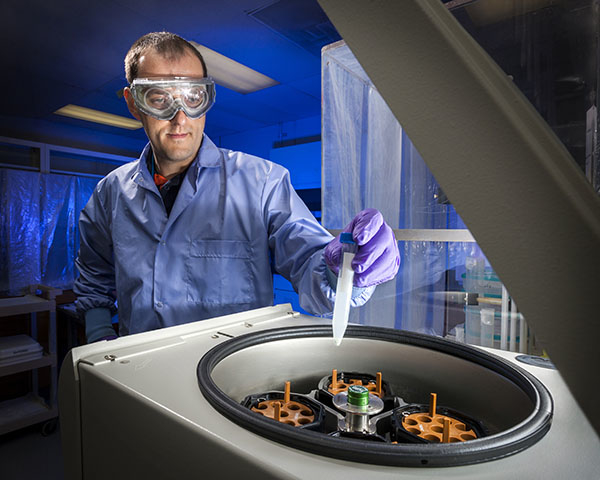
Center for Accelerator Mass Spectrometry
Accelerating science for LLNL and the nation since 1988
Group leader: Ted Ognibene
Our scientists support the Center for Accelerator Mass Spectrometry (CAMS) at LLNL. With our support, CAMS activities have broad-ranging scientific impacts while also contributing to LLNL mission needs. Scientists working at CAMS have:
- Used diverse analytical techniques and state-of-the-art instrumentation to develop and apply unique, ultra-sensitive isotope ratio measurement and ion-beam analytical techniques to address a broad spectrum of scientific needs for the Laboratory and the nation.
- Provided unique, cross-cutting, program support.
- Delivered high-impact science, publications, and pipelines:
- Our work has been featured on 16 journal covers.
- We host ~60 researchers and students each year.
- Over 30 students and postdocs at CAMS have become LLNL employees.
- Invented BioAMS, which has served as a National Institute of Health-funded research resource for two decades.
- Developed use of cosmogenic isotopes for studying Earth system processes.
- Trained most of the scientists who are now working at AMS labs across the world, with many in leadership roles.
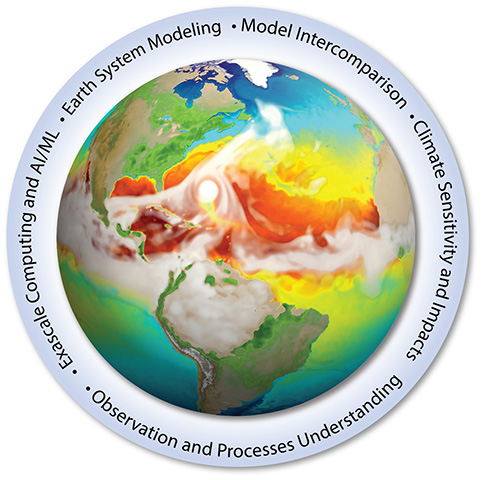
Climate Sciences Section
Applying expertise in climate modeling, analysis, sensitivity, and impact to address critical national needs
Section leader: Shaocheng Xie
Group leaders:
- Yunyan Zhang, Climate Analysis
- Peter Caldwell, Climate Modeling Group
- Celine Bonfils, Climate Sensitivity and Impacts
The Climate Sciences Section is made up of three groups: Climate Analysis, Climate Modeling, and Climate Sensitivity and Impacts. Our section is a recognized leader in basic research into cloud processes, their diagnosis with observations, their parameterization and evaluation in climate models, and their response to climate change.
The Climate Science Section:
- Plays a leading role in developing the Department of Energy’s (DOE) High-Resolution Earth System Model (E3SM).
- Demonstrates international leadership in:
- Climate model intercomparison, evaluation, and analysis.
- Cloud feedback, climate sensitivity, detection, and attribution of human impacts on Earth’s climate.
- Model assessment and observational data analysis of cloud processes and their response to environmental change.
- Expertly applies machine learning and climate modeling tools to climate resilience and impact studies.
- Has led global efforts to standardize climate experimentation since 1989 through the Program for Climate Model Diagnosis and Intercomparison (PCMDI).
- Performs and communicates high-quality science research. Section researchers:
- Serve as lead chapter-authors for every Intergovernmental Panel on Climate Change (IPCC) report.
- Participate as chairs or members on international and national scientific committees.
- Publish in Science, Nature, and other high-impact journals.
- Earn a wide range of government and professional society awards and fellowships.
To learn about general climate research at LLNL, visit the Climate Program website.
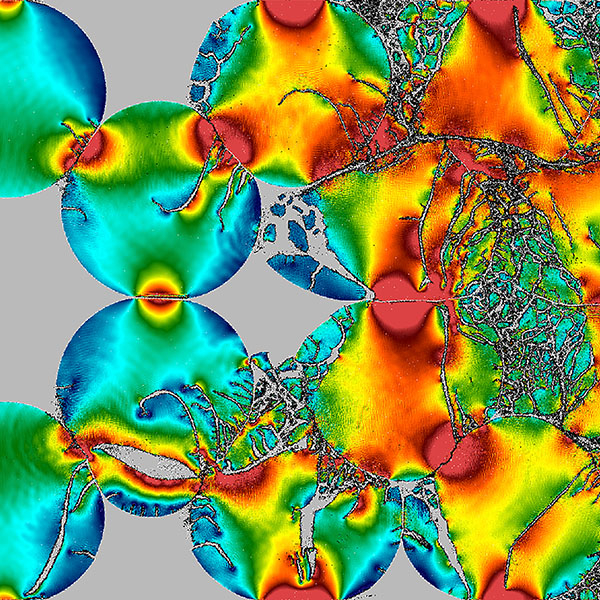
Computational Geosciences
Unique software solutions for subsurface mechanics
Group leader: Eric Herbold
Our group develops and employs cutting-edge software to tackle challenging problems that require understanding and exploiting subsurface processes. A common theme in our work is the employment of novel algorithms on the world’s fastest supercomputers to deliver high-fidelity three-dimensional predictions that include a wide range of coupled physical effects. Our projects support a wide range of applications from energy to defense with national and worldwide significance. Our recent projects include:
- Applying methods and models from the geosciences to diverse applications across the Laboratory’s mission space.
- Developing tools that enable real-time analysis and decision making for subsurface systems.
- Validating enhanced geothermal concepts deep in a retired gold mine.
- Improving our ability to monitor and detect underground detonations.
- Performing high-fidelity modeling and experiments investigating shock-loading of granular materials.
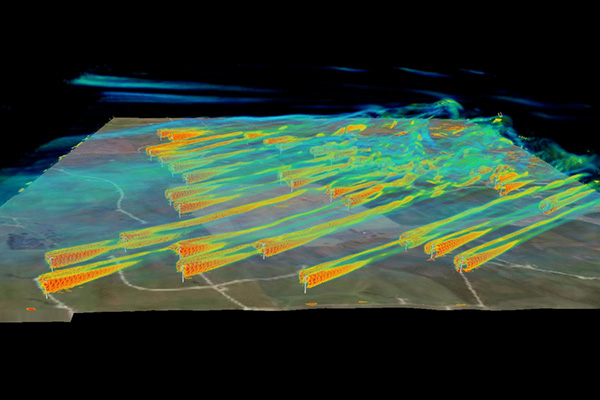
Energy and Carbon Management
Connecting energy and the environment
Group leader: George Peridas
Our group works to study and improve aspects of our energy system that serve climate change mitigation efforts and the public good. We act as a resource to advise and educate the government, communities, businesses, stakeholders, and other institutions on the technical, scientific, policy, environmental, and social aspects of carbon management technologies. Specifically, we focus on:
Carbon management
- Rigorous bottom-up analyses of how governments, jurisdictions, and companies can achieve carbon neutrality. LLNL has produced such analyses for the state of California (“Getting to Neutral”), Microsoft Corporation, and is now focusing on a national analysis for the entire US. These studies apply systems analysis of integrated renewable, carbon-neutral, and carbon-negative technologies, transport, and geologic storage.
- Supporting the development and deployment of specific carbon management solutions, projects, and technologies, including the removal of carbon dioxide from the atmosphere—in a manner that serves both the climate and the interests and needs of host communities.
- Developing new hybrid approaches that synergistically combine renewable energy with other energy sources, carbon capture, and storage.
Energy and natural systems integration
- Applying systems analysis to new energy production, transport, and storage projects.
- Providing technical, economic, policy, and systems analysis support for carbon capture and storage, carbon removal, and other sustainable energy technologies in California and elsewhere.
- Developing and analyzing energy-storage concepts, such as heat and hydrogen storage.
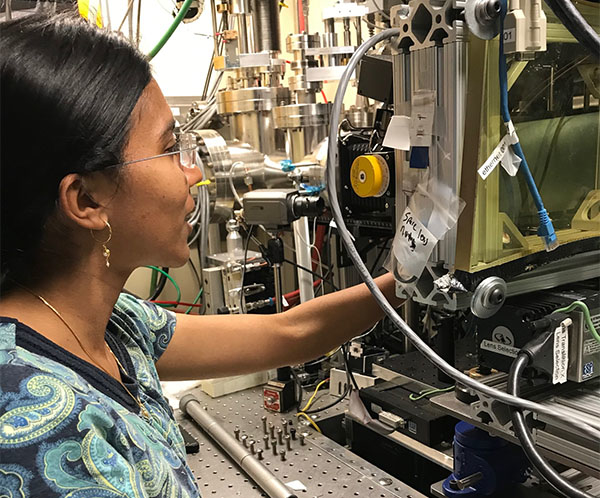
Porous Media
Advancing the science and engineering of coupled chemistry, mechanics, and multi-phase flow in porous materials
Group leader: Megan Smith
Our group focuses on challenging problems involving both natural and engineered porous materials using experimental methods, numerical modeling, and geophysical monitoring techniques related to fluid flow and reactive transport. We address coupled hydro-chemical-thermal-mechanical phenomena across multiple scales from the laboratory to the field.
Additionally, the group’s work has national security, environmental management, energy, and climate mitigation applications. Examples include:
- Studying the fate of gases and contaminants from underground nuclear tests.
- Overseeing the design and operation of subsurface storage systems, such as those used for carbon or hydrogen.
- Understanding cement and polymer degradation in extreme environments.
- Developing next-generation subsurface simulation software.
- Advancing multi-physics geophysical monitoring.
To accomplish our work, we routinely collaborate with other discipline organizations from across the Laboratory, as well as with external academic and industrial institutions.
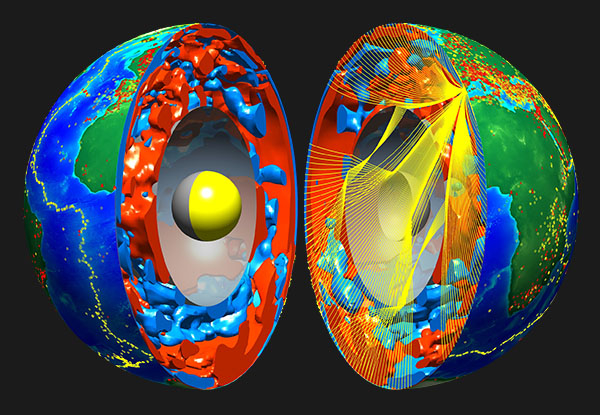
Seismology
Applying geophysical expertise to national and energy security problems
Group leader: Arben Pitarka
Our group is comprised of over 18 earth scientists who have expertise in explosion and earthquake source physics, seismic source detection and discrimination, Earth models, seismic tomography, earthquake location, high-performance computing, engineering seismology, machine learning, data fusion, induced seismicity, and infrasound signals.
In supporting LLNL’s non-proliferation, national security, and energy missions, our researchers:
- Develop key methods, models, and software for explosion monitoring, forensics, and seismic hazard assessment.
- Create high-resolution global 3D Earth models for accurate seismic event locations and earthquake and explosions simulations.
- Provide unique expertise to US policy makers, including support for the Comprehensive Nuclear-Test-Ban Treaty Organization and National Academy reports.
- Receive prestigious awards, including the Fulbright Scholarship and the E.O. Lawrence Award for Non-Proliferation.
- Hold leadership positions in professional societies, expert panels, and capacity building workshops.
Career Opportunities
We’re always looking for talented scientists to join our team.
Browse our open positions or read about our student research opportunities.
Capabilities & Facilities
Our researchers utilize world-class scientific capabilities and modern high-performance computing facilities to support Laboratory programs. Listed below are LLNL’s state-of-the-art capabilities commonly used by our scientists.
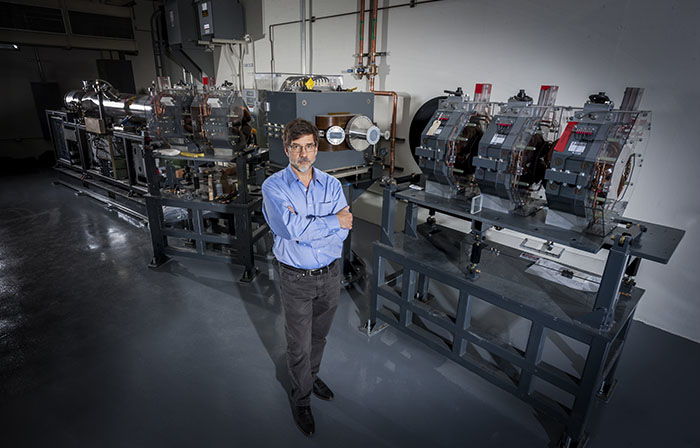
Accelerator Complex
Contact: Scott Anderson
LLNL’s accelerator complex houses sophisticated tools to accelerate charged particles to incredibly high speeds. Located three stories underground, these instruments allow our nuclear physicists to detect isotopes, create fast neutrons, peer inside heavily shielded objects, and characterize unknown material.
Additional information is available on the Accelerator Complex webpage.
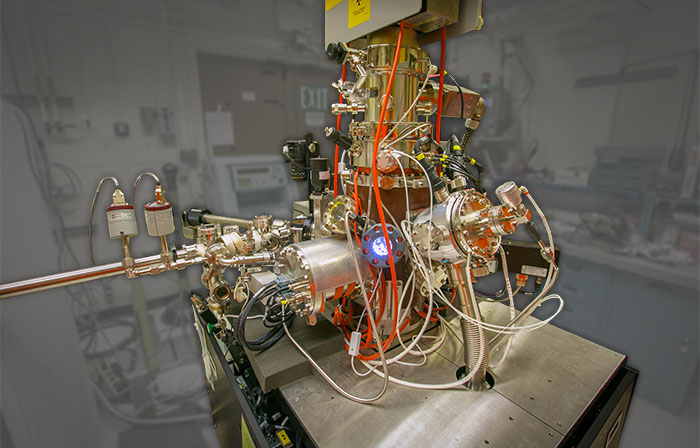
Actinide Materials
Contact: Scott McCall
We support global and national security missions by maintaining capabilities to synthesize, characterize, and test materials containing actinides.

Animal Care Facility (ACF)
Contact: acf [at] lists.llnl.gov (ACF support)
The Association for Assessment and Accreditation of Laboratory Animals, International (AAALAC)-accredited and Public Health Service (PHS) Assured animal facility houses several thousand small animals, which are cared for by full-time Laboratory animal technologists. Animal models are used in comparative genomics studies that focus on understanding gene regulation and for vaccine and countermeasure development.
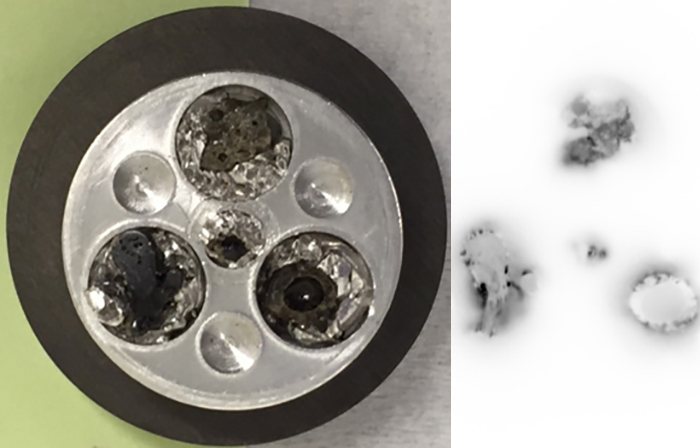
Autoradiography Imaging
Contact: Kim Knight
Sub-millimeter resolution alpha and beta radioactivity imaging
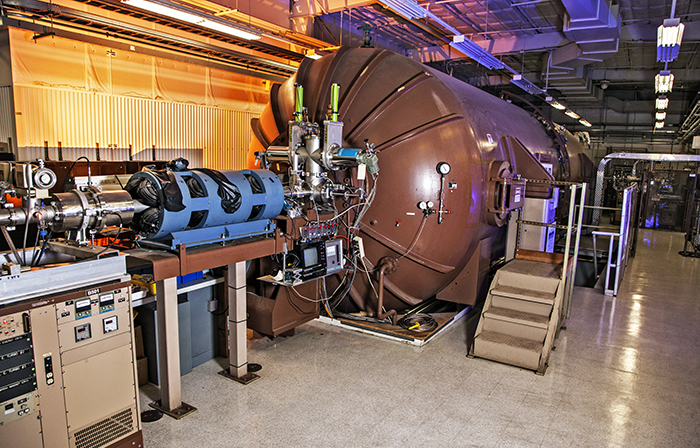
Center for Accelerator Mass Spectrometry (CAMS)
Contact: Nanette Sorensen or Scott Tumey
Researchers at CAMS use diverse analytical techniques and state-of-the-art instrumentation to develop and apply unique, ultra-sensitive isotope ratio measurement and ion beam analytical techniques.
Additional information is available on the CAMS website.
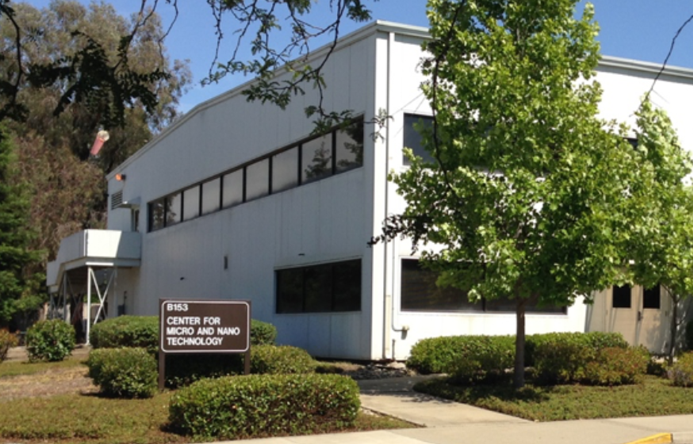
Center for Micro- and Nanotechnology (CMNT)
Contact: Engineering Directorate
Researchers at the CMNT invent, develop, and apply microscale and nanoscale technologies to support LLNL missions. The research and capabilities of the Center cover materials, devices, instruments, and systems that require microfabricated components, including microelectromechanical systems (MEMS), electronics, photonics, micro- and nanostructures, and micro- and nanoactuators.
Additional information is available on the Engineering website.
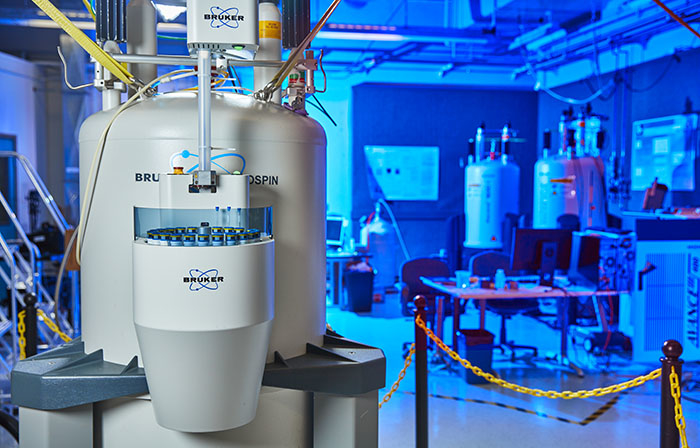
Center for National Security Applications of Nuclear Magnetic Resonance (NMR)
Contact: TBD
The NMR facility provides advanced characterization of chemical processes and materials using magnetically passed spectroscopic capabilities. The center houses multiple spectrometers used to analyze solids, liquids, and gases, including explosives, highly toxic industrial chemicals, and chemical and biological threat agents.

Computational Nuclear Physics
Contact: Bret Beck
We measure, collect, and evaluate nuclear data and incorporate these data into libraries to be used in simulations. We provide nuclear data, physics simulation, and data processing tools for experimental and theoretical nuclear data.
Additional information is available on the Computational Nuclear Physics website.
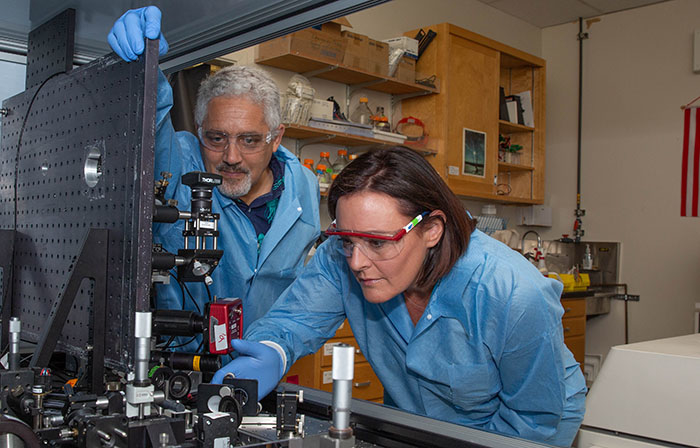
Cooperative Research Center for NanoScaffold-based Chlamydia trachomatis Vaccines
Contact: Matthew Coleman
Leading experts in immunology and nanotechnology are developing and testing a new type of vaccine to prevent sexually transmitted infections caused by the Chlamydia trachomatis (Ct) pathogen.
Additional information is available on the Cooperative Research Center for NanoScaffold-based Chlamydia trachomatis Vaccines webpage.
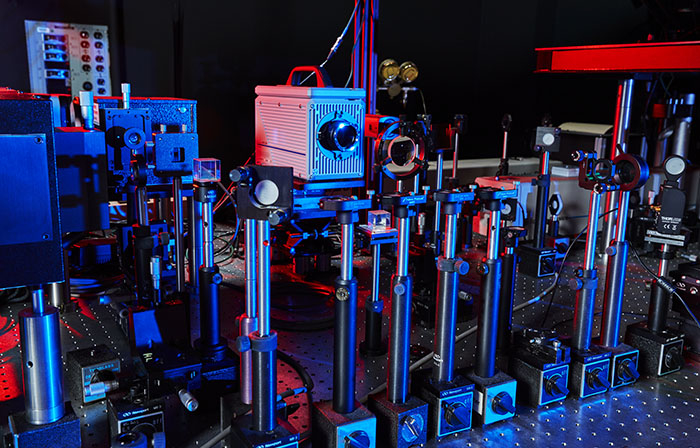
Diamond Anvil Cell (DAC) and Ultrafast Science
Contact: Geoffrey Campbell
Our diamond anvil-based laboratories can measure materials properties at static pressures above 1 Mbar, providing essential equation-of-state information for weapons, experiment design, and further study of the chemistries that control unique material formation. Additional experiments to study shock compression with 10 picosecond time resolution are pushing the limits of current theories of the metal strength, phase transitions, and chemical kinetics.
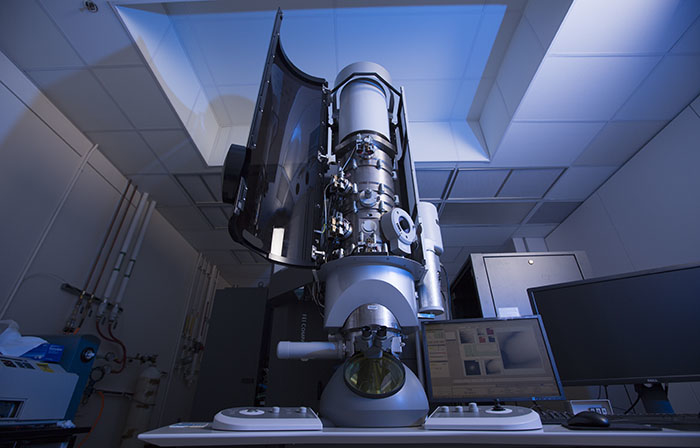
Dynamic Transmission Electron Microscope (DTEM)
Contact: Geoffrey Campbell
The LLNL-developed DTEM enables direct observation of unique mechanical properties controlled by features at the nanoscale.
Additional information is available on the DTEM webpage.
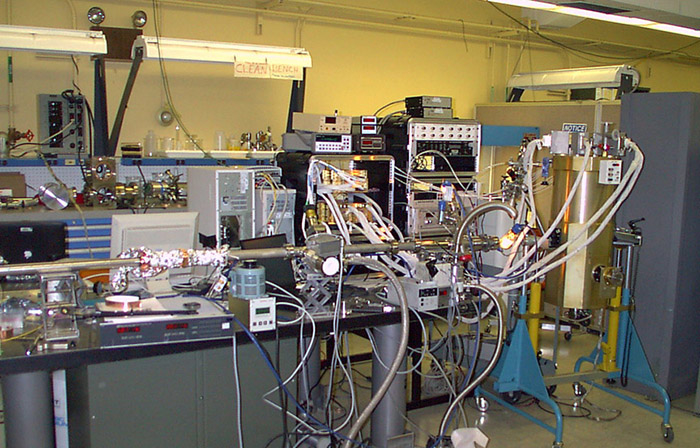
Electron Beam Ion Trap (EBIT)
Contact: Greg Brown
An EBIT makes and traps very highly charged ions by means of a high-current density electron beam. The ions can be observed in the trap itself or extracted from the trap for external experiments. Our EBIT is the only ion source in the world that can create highly charged ions that are practically at rest, allowing us to study an otherwise inaccessible domain.
Additional information is available on the EBIT website.
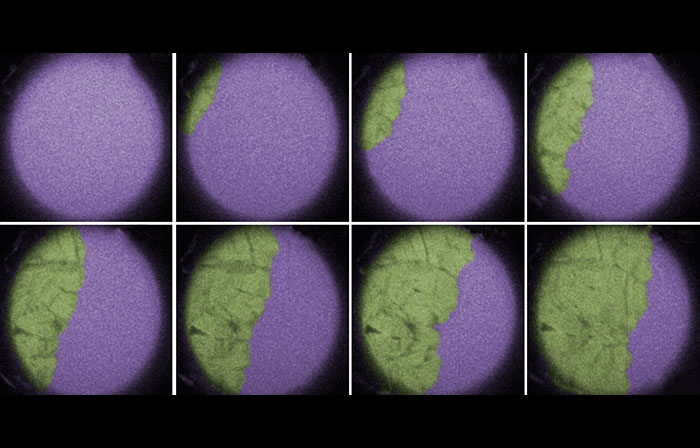
Electron Microscopy
Contact: Kerri Blobaum
LLNL maintains state-of-the-art capabilities in scanning electron microscopy (SEM) and transmission electron microscopy (TEM) to characterize materials.
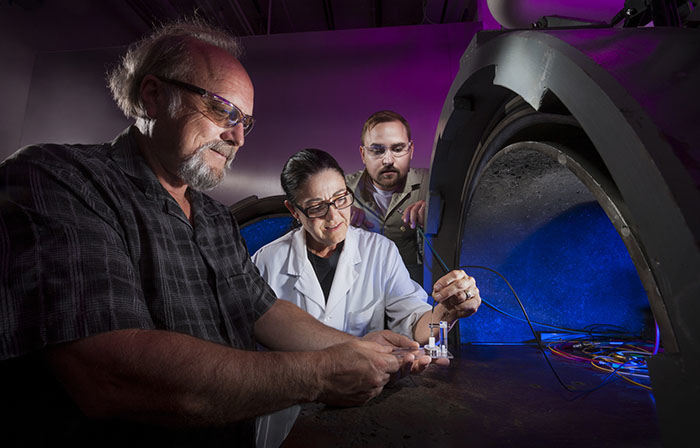
Energetic Materials Center (EMC)
Contact: Lara Leininger
The EMC supports research and development for advanced conventional weapons, rocket and gun propellants, homeland security, demilitarization, and industrial applications of energetic materials. Our researchers, as part of the EMC, specialize in the modeling and experimentation surrounding the development, characterization, and effectiveness of high explosives.
Additional information is available on the EMC website.
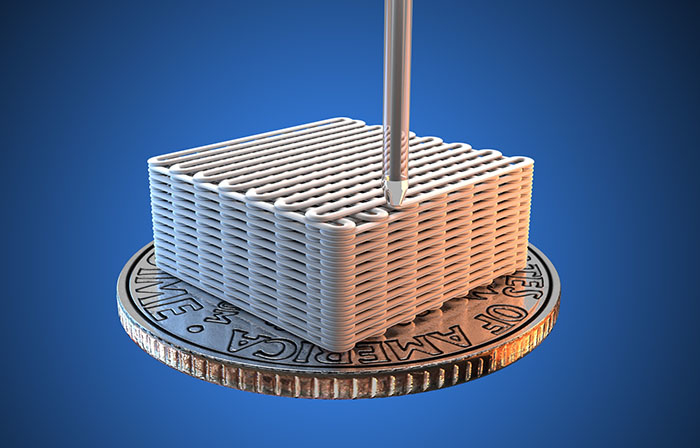
Feedstocks for Additive Manufacturing
Contact: Yong Han
Our scientists and engineers optimize additive manufacturing (3D printing) techniques, such as direct-ink writing, through focused investments in feedstock development. Using computer programs to simulate particle size and scale, we develop new feedstock materials from combinations of polymers, composites, and ceramics, with applications ranging from weapon components to energy innovations.
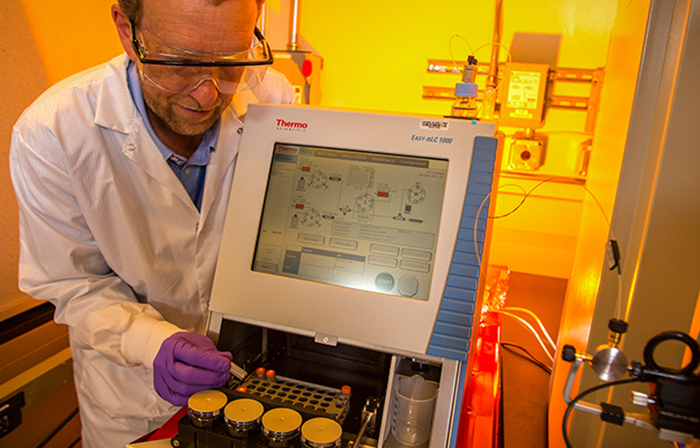
Forensic Science Center (FSC)
Contact: Audrey Williams
FSC researchers analyze interdicted samples, provide radiological assistance 24/7, and engage in the critical research and development needs of the intelligence community. FSC expertise includes analytical chemistry, organic chemistry, inorganic chemistry, nuclear chemistry, and forensic instrument design and fabrication.
Additional information is available in the FSC Fact Sheet and on the FSC website.
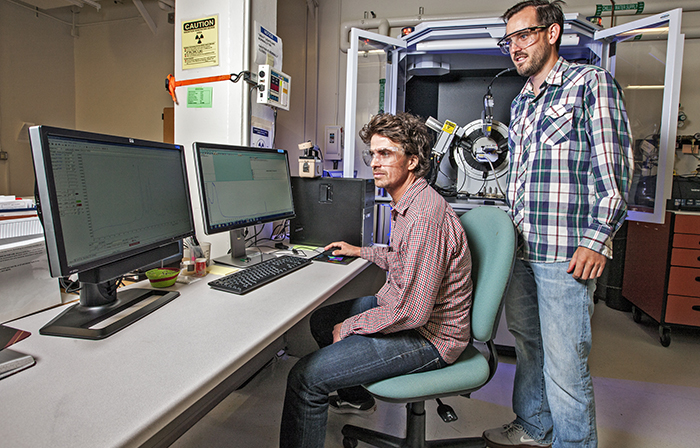
Glenn T. Seaborg Institute
Contact: Mavrik Zavarin
The LLNL branch of the Glenn T. Seaborg Institute conducts collaborative research between LLNL and the academic community in radiochemistry and nuclear forensics, contributing to the education and training of undergraduate and graduate students, postdocs, and faculty in transactinium science.
Additional information is available on the Seaborg Institute website.
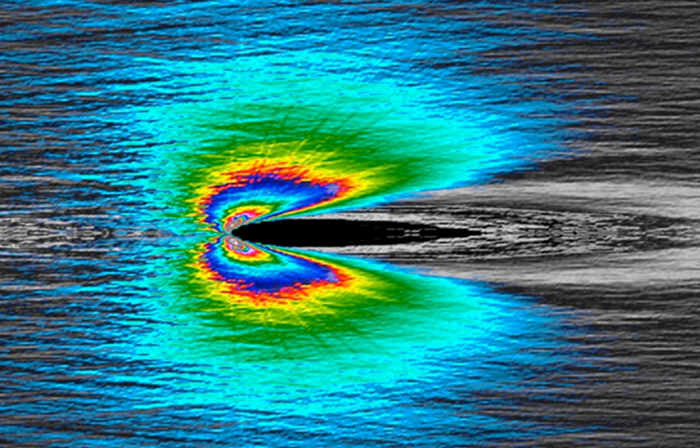
High Energy Density Science (HEDS) Center
Contact: Frank Graziani
The HEDS Center fosters collaborations with university faculty and students that have the potential to enhance high-energy-density science research. The HEDS Center facilitates access to LLNL’s HEDS experimental facilities and high-performance computing resources in order to support research important to the Department of Energy.
Additional information is available on the HEDS Center website.
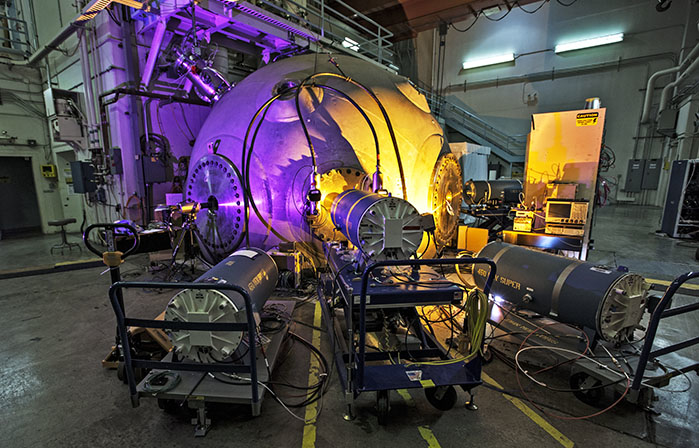
High Explosives Applications Facility (HEAF)
Contact: Lara Leininger
HEAF houses unique facilities for the synthesis, characterization, and testing of high explosives and other energetic materials. HEAF is also equipped with extensive, high-fidelity, high-speed diagnostic capabilities, including x-ray radiography, high-speed photography, laser velocimetry, and embedded particle velocity/pressure measurements.
Additional information is available on the HEAF webpage.
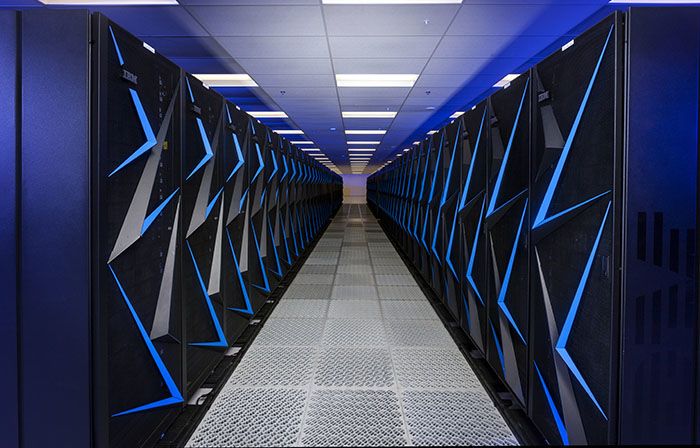
High-Performance Computing
Contact: lc-support [at] llnl.gov (LC support)
LLNL is home to a first-class computational infrastructure that supports the high-performance computing requirements of the Laboratory’s mission and research scientists. Livermore Computing provides the systems, tools, and expertise needed to enable discovery and innovation through simulations.
Additional information is available on the Livermore Computing Center website.
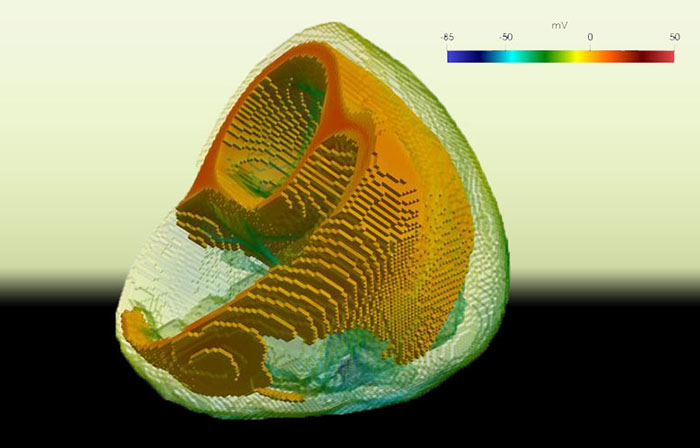
High-Performance Computing (HPC) Innovation Center
Contact: HPC Innovation Center
LLNL’s HPC Innovation Center connects companies with computational science and computer science experts, on demand, to help them solve their toughest challenges. It also provides cost-effective access to some of the world’s largest HPC systems and rapidly assembles expert teams to develop, prove, and deploy high-impact solutions across a broad range of industries and applications.
Additional information is available on the HPC Innovation Center website.

Joint Genome Institute (JGI)
Contact: Crystal Jaing
The JGI is a high-throughput genome sequencing and analysis facility dedicated to the genomics of nonmedical microbes, microbial communities, plants, fungi, and other targets relevant to DOE mission areas in clean energy generation, climate change, and environmental sciences. Scientists from the Genomics group support key missions of JGI by performing DNA sequencing experiments and sequencing data analysis utilizing unique molecular biology skills and state-of-the-art instrumentation.
Additional information is available on the JGI website.
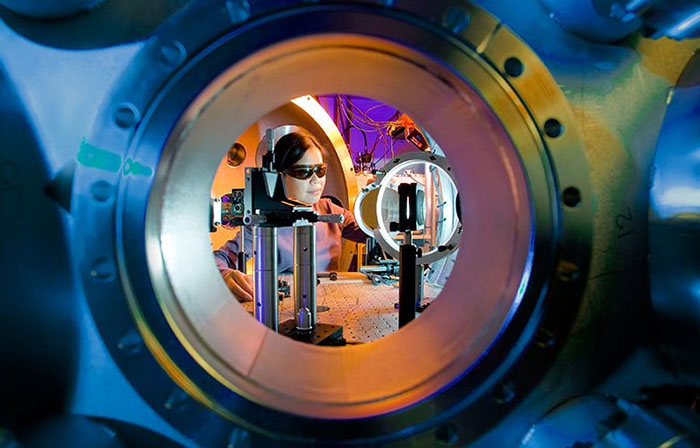
Jupiter Laser Facility (JLF)
Contact: Elaine Johnson
JLF is a unique laser user facility for research in high-energy-density science. Its diverse laser platforms offer researchers a wide range of capabilities to produce and explore states of matter under extreme conditions of high density, pressure, and temperature.
Additional information is available on the JLF website.
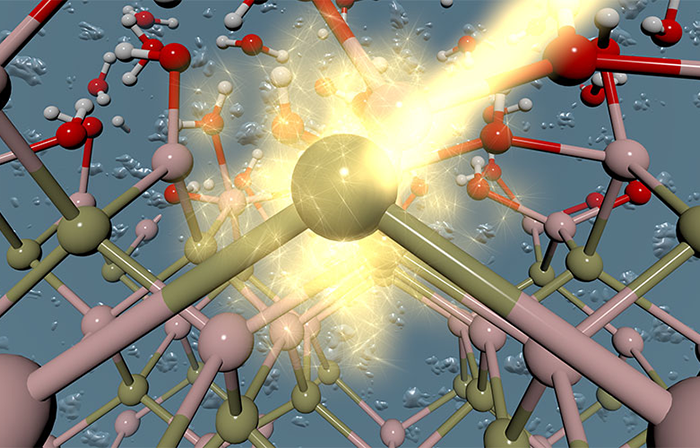
Laboratory for Energy Applications for the Future (LEAF)
Contact: Brandon Wood
LEAF is a multidisciplinary center that develops disruptive technologies for the grid, transportation, and the environment from inception to demonstration.
Additional information is available on the LEAF website.

Mass Spectrometry
Contact: Rachel Lindvall
LLNL’s mass spectrometry instruments offer experimental and diagnostic techniques that make it possible to count atoms, study lunar rocks, isolate isotopes, and characterize unknown material. These sophisticated tools enable our nuclear chemists, cosmochemists, and radiochemists to tackle complex science challenges.
Additional information is available on the Mass Spectrometry webpage.
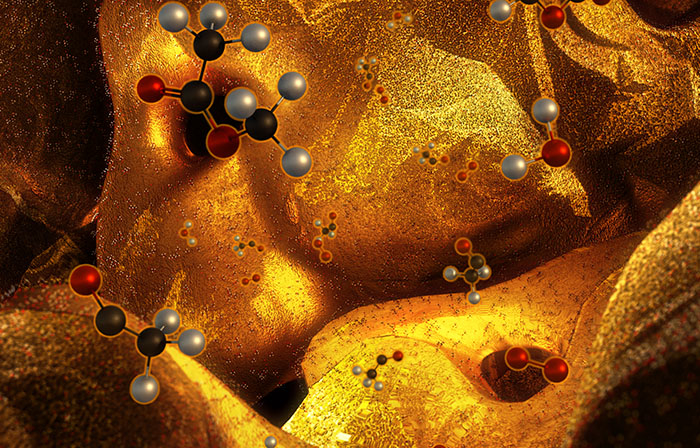
Nanoscale Synthesis and Characterization Laboratory (NSCL)
Contact: Alex Hamza
NSCL is making advances in science at the intersection of physics, materials science, engineering, and chemistry. We are pursuing research in nanoporous materials, advanced nano crystalline materials, novel 3D nanofabrication technologies, and nondestructive characterization at the mesoscale.
Additional information is available on the NSCL webpage.
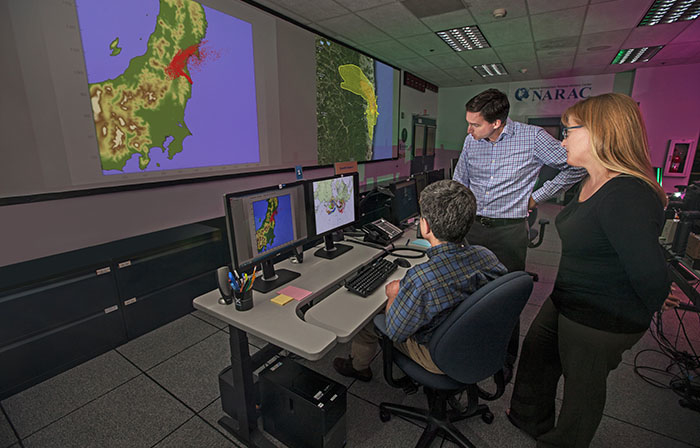
National Atmospheric Release Advisory Center (NARAC)
Contact: Lee Glascoe
NARAC is a national support and resource center for planning, real-time assessment, emergency response, and detailed studies of atmospheric releases of nuclear, radiological, chemical, biological, and natural materials. NARAC provides timely and accurate atmospheric plume predictions to aid emergency preparedness and response efforts in protecting the public and the environment.
Additional information is available on the NARAC website.
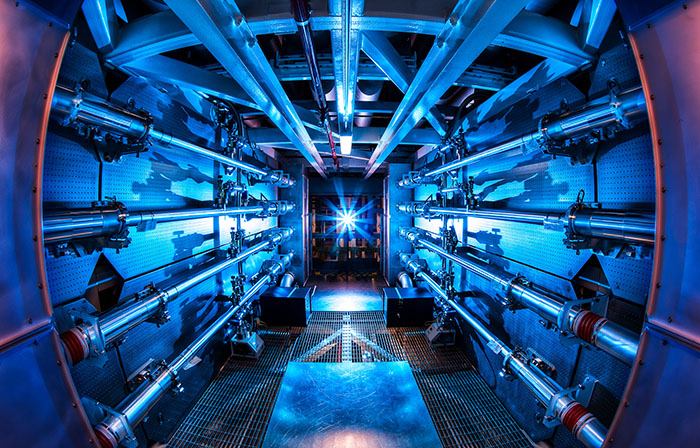
National Ignition Facility (NIF)
Contact: Patricia Koning
NIF houses the world’s largest and highest-energy laser. NIF’s laser beams routinely create temperatures and pressures similar to those that exist only in the cores of stars and giant planets and inside nuclear weapons. The facilities are a key element of maintaining the reliability and safety of the U.S. nuclear deterrent without full-scale testing.
Additional information is available on the NIF website.
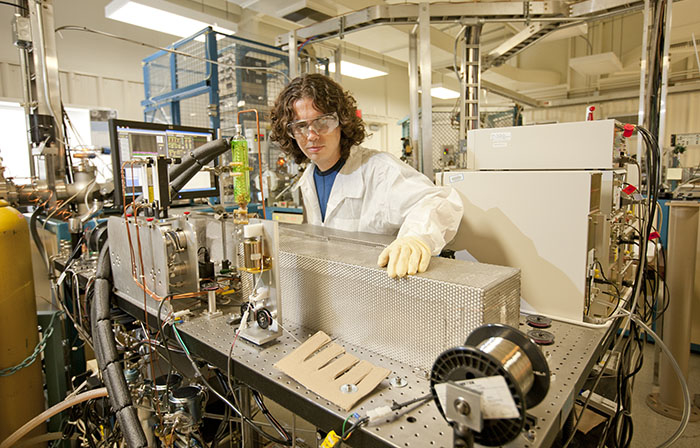
National User Resource for Biological Accelerator Mass Spectrometry (BioAMS)
Contact: Graham Bench
BioAMS makes accelerator mass spectrometry (AMS) available to biomedical researchers who need to accurately measure very low levels of radioisotopes. BioAMS is working to enhance AMS for analysis of radioisotopes in biomedical tracer studies through development of new methods and instrumentation.
Additional information is available on the BioAMS website.
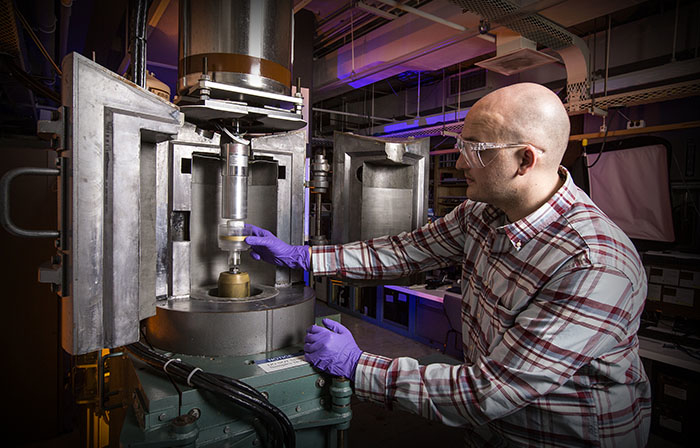
Nuclear Counting Facility (NCF)
Contact: Keenan Thomas
Located two floors below ground, with a layer of shielding materials between floors to minimize background radiation, LLNL’s Nuclear Counting Facility provides high-sensitivity radiation measurements. Its assets include gamma spectrometers, solid-state detectors, alpha and beta counting systems employing ionization gas chambers, and liquid scintillation techniques.
The facility supports research in stockpile stewardship, nonproliferation, and counterterrorism, including:
- Analyzing samples and surrogate materials in support of nuclear forensics efforts.
- Studying samples collected during underground nuclear tests, which ended in 1992.
- Determining the number of radioactive atoms produced during experiments at LLNL’s National Ignition Facility.
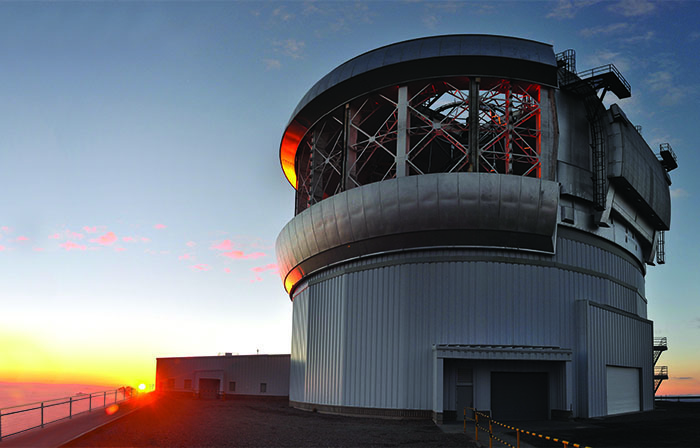
Optical Sciences
Contact: Alex Pertica
Our experts develop x-ray adaptive optics systems and optical payloads for nano-satellites. We have explored the use of survey telescopes for dark matter research, developed algorithms and software tools for simulation of orbital space events, and implemented sensor calibration and exploitation strategies for hyperspectral airborne sensors.
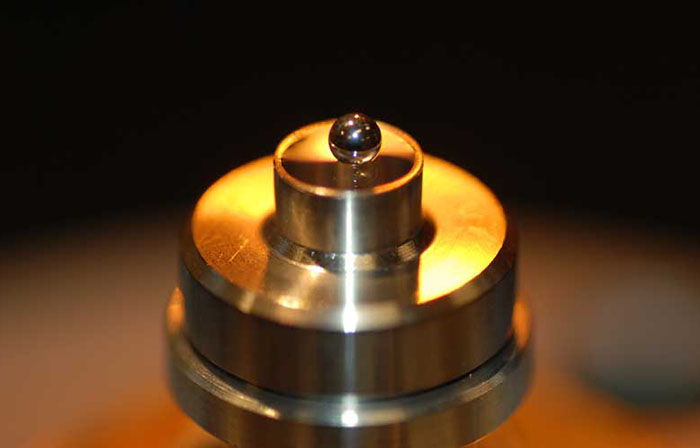
Polymer Science
Contact: James Lewicki
We maintain capabilities to synthesize, characterize, and model a broad range of polymeric materials and architectures.

